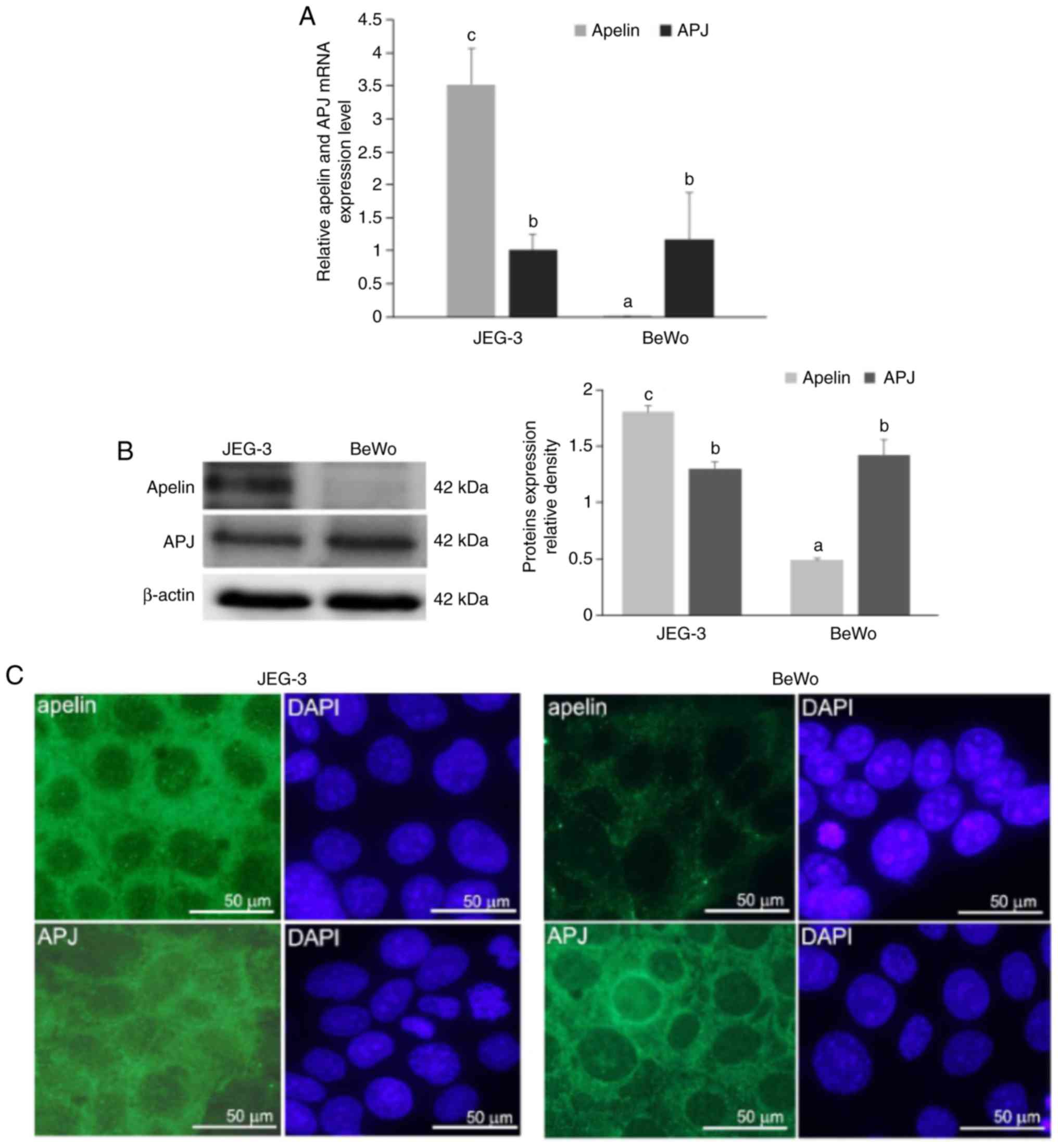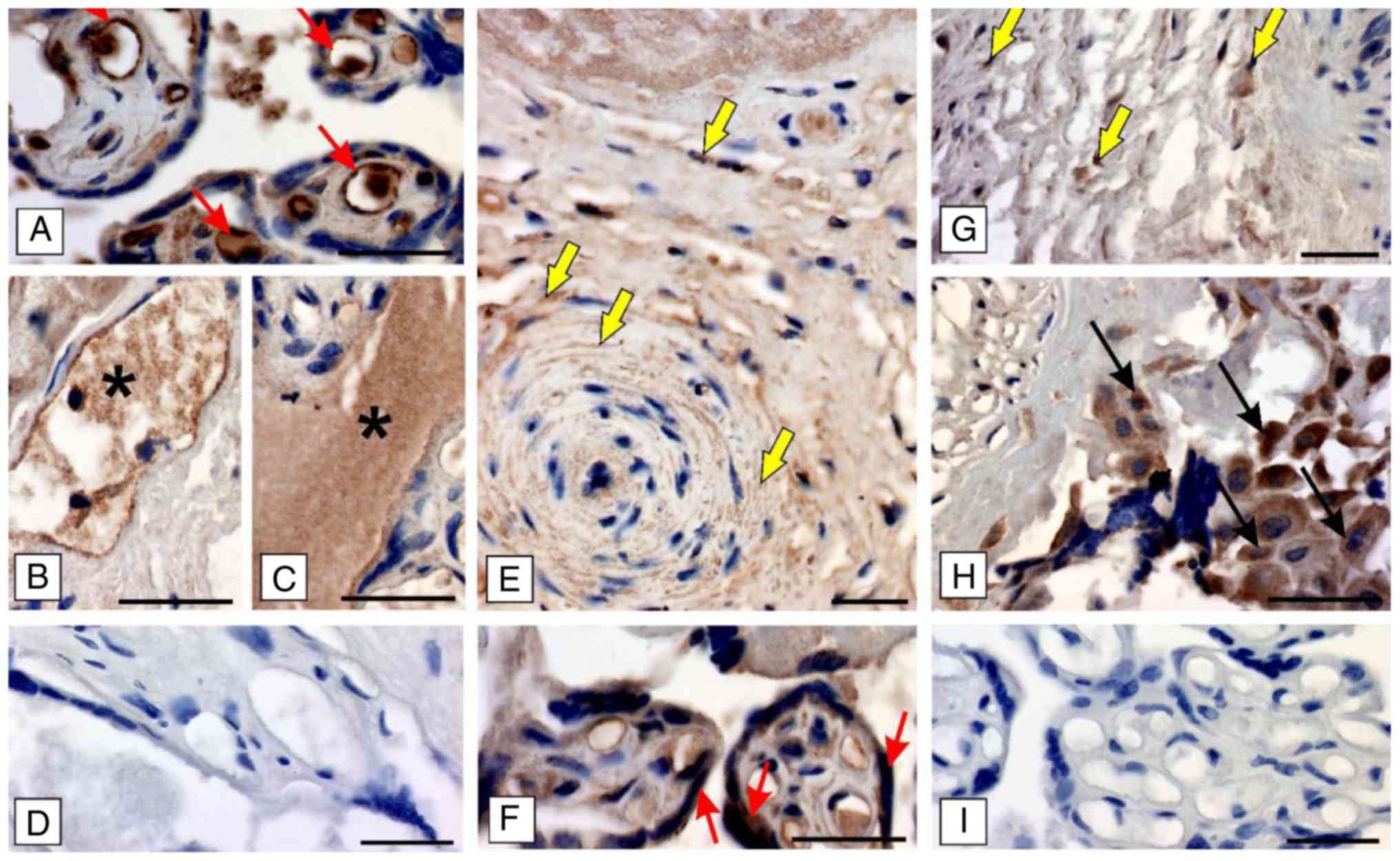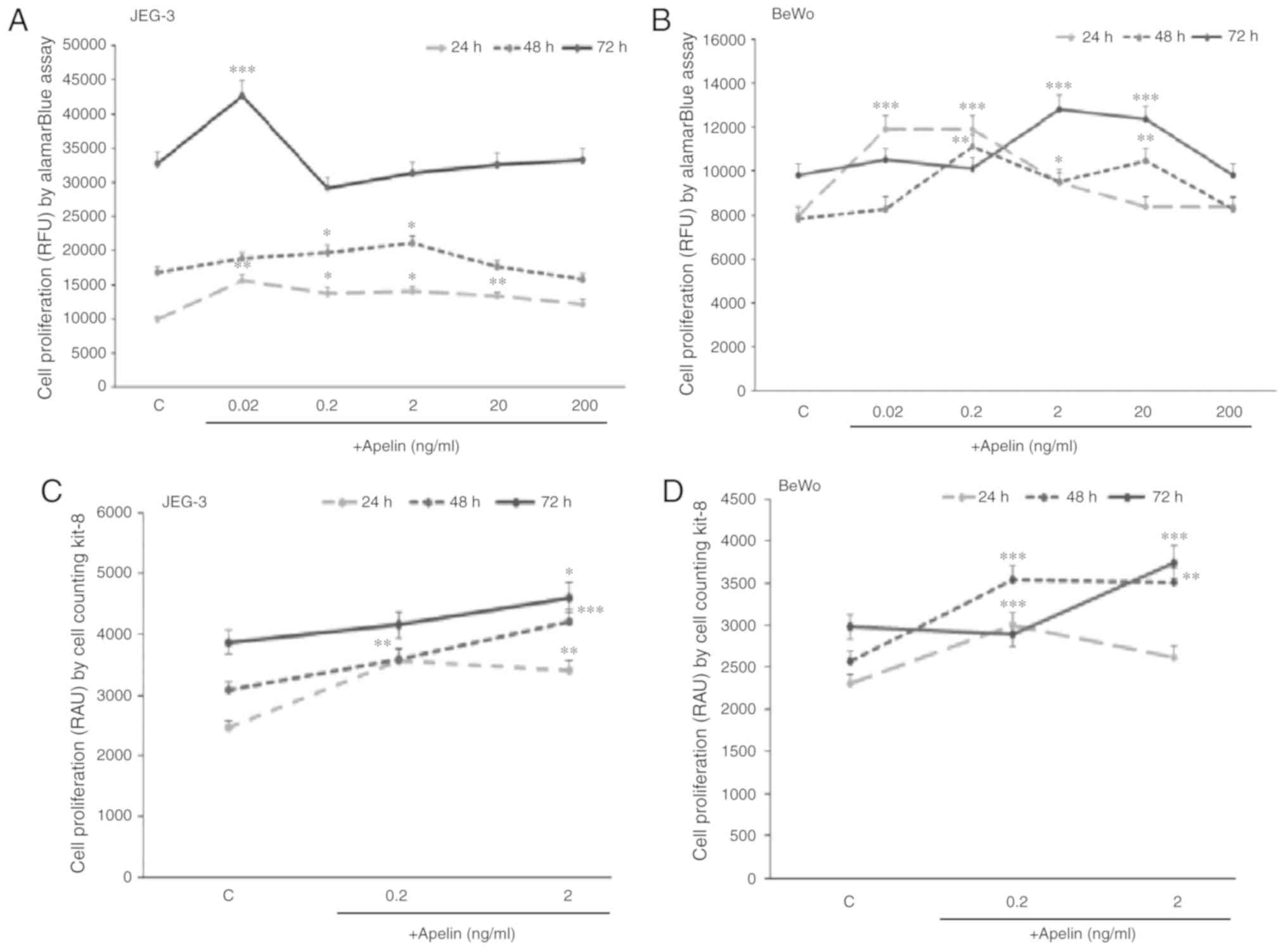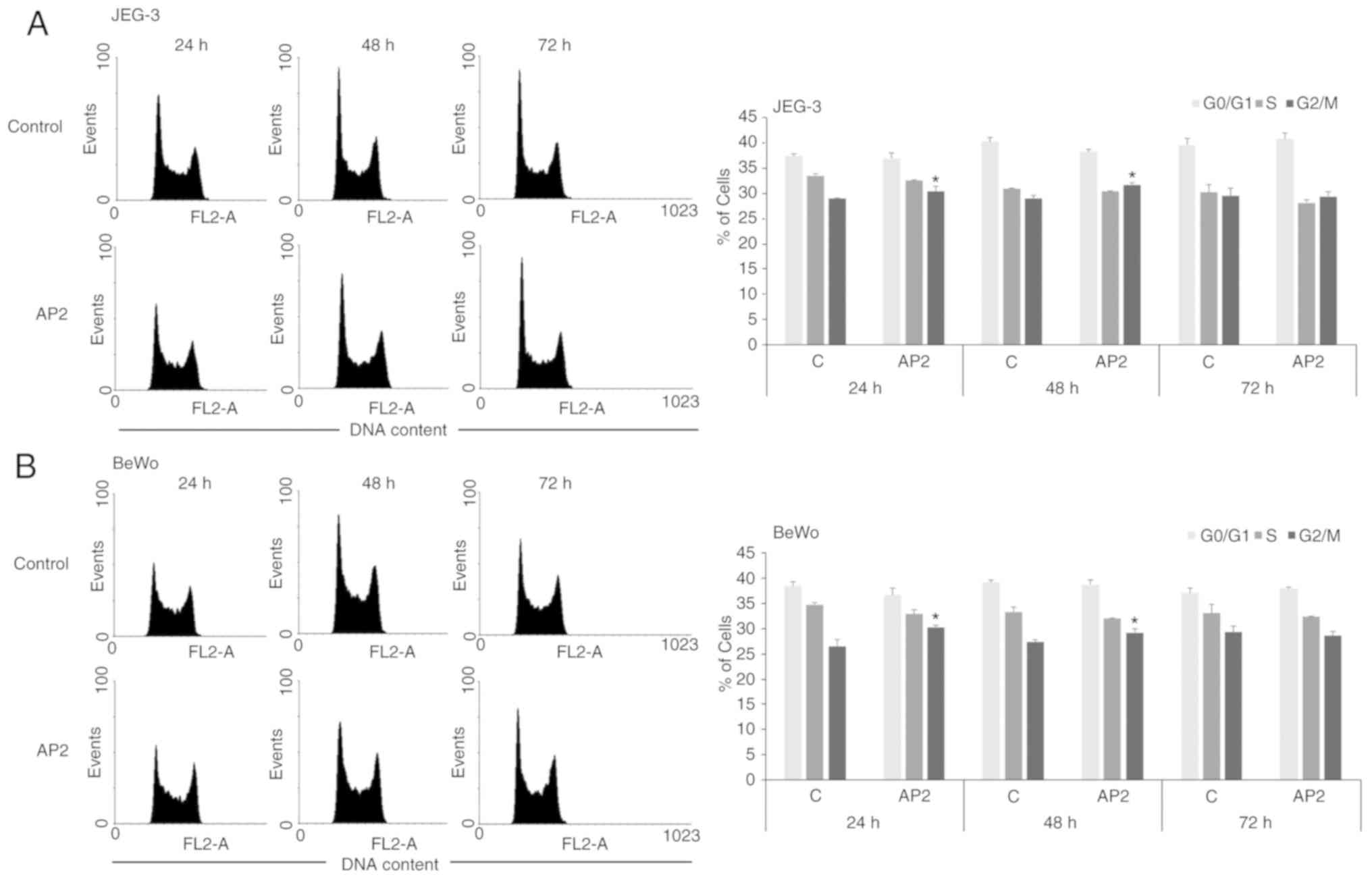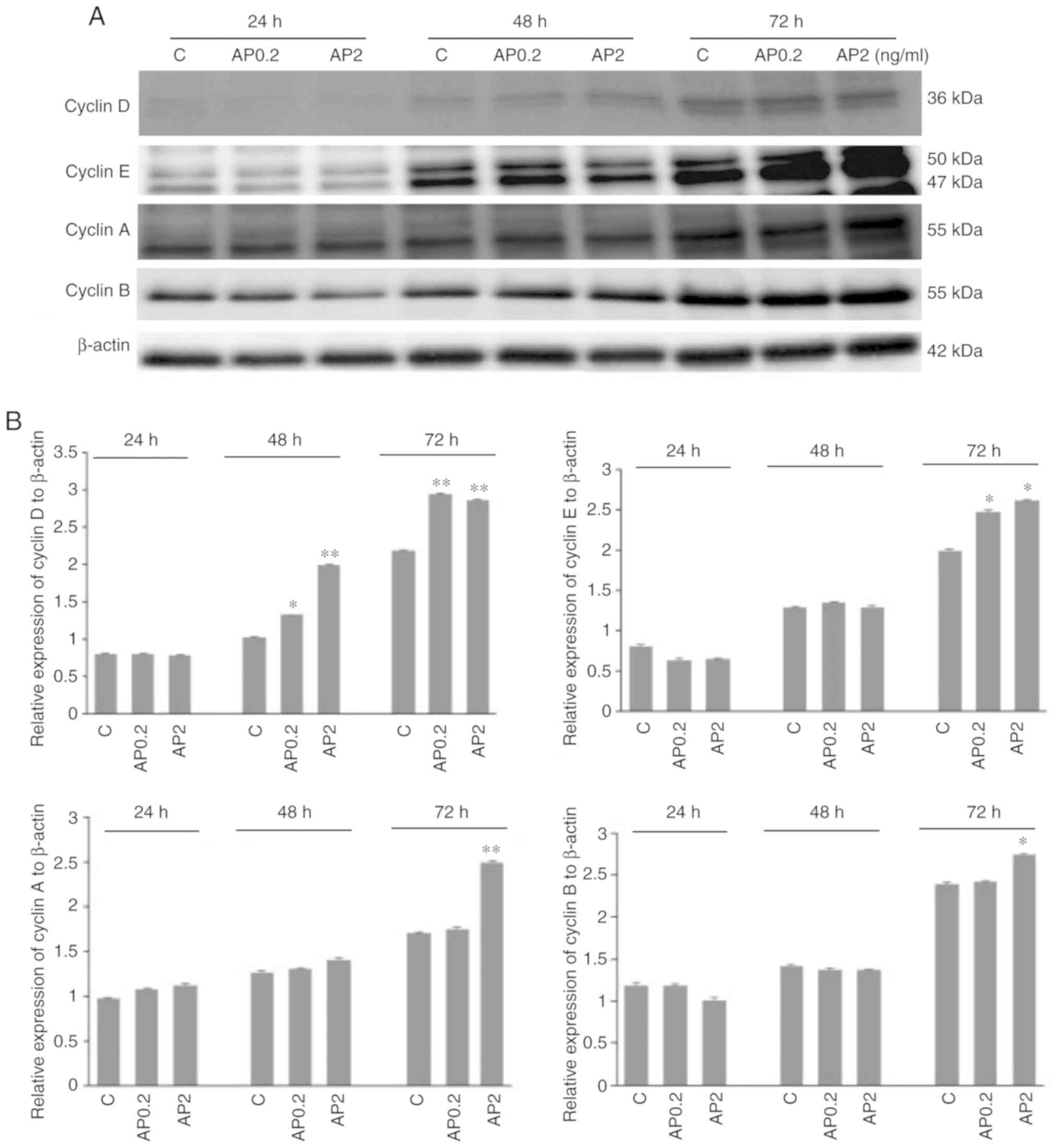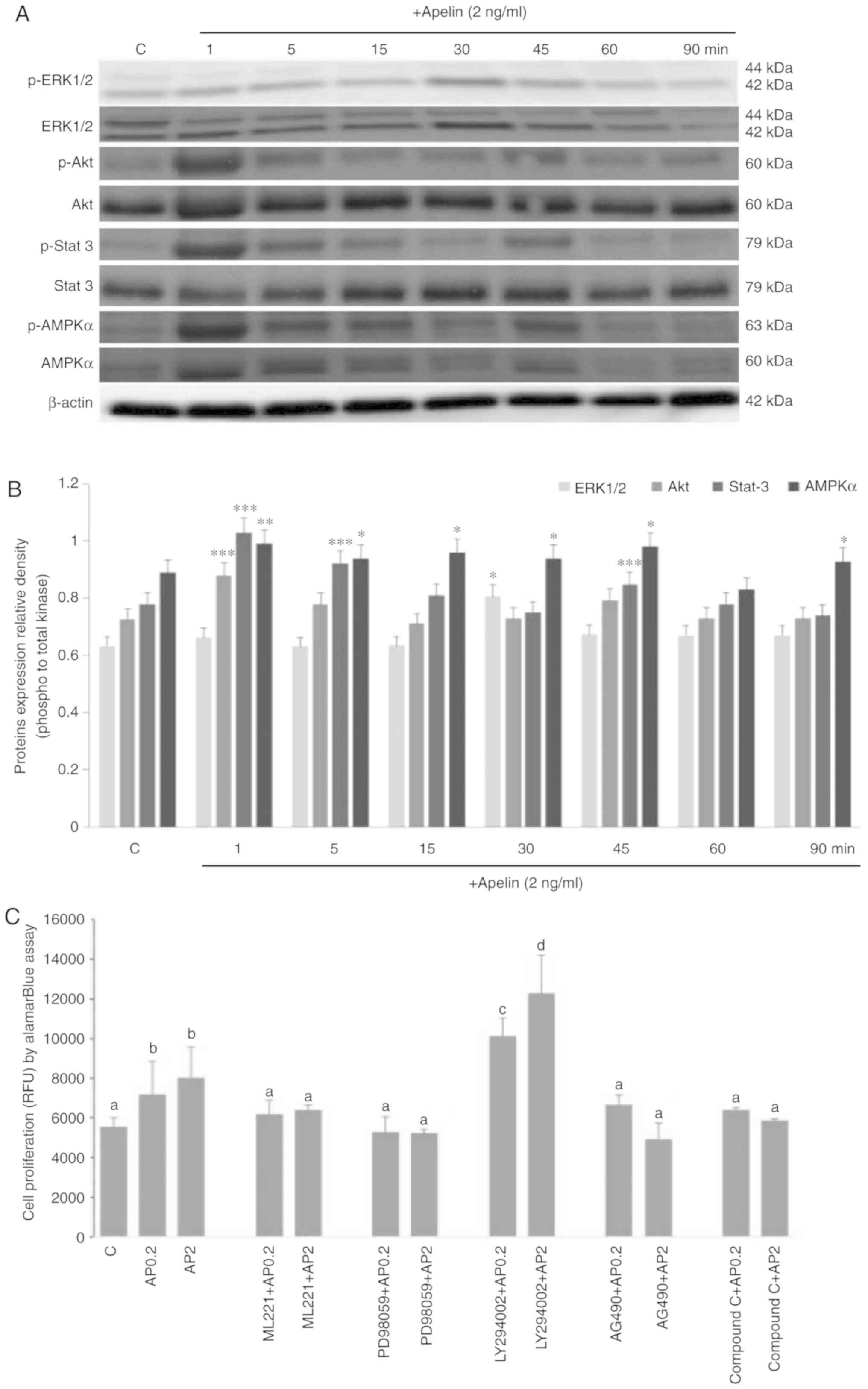|
1
|
Maltepe E, Bakardjiev AI and Fisher SJ:
The placenta: Transcriptional, epigenetic, and physiological
integration during development. J Clin Invest. 120:1016–1025. 2010.
View Article : Google Scholar : PubMed/NCBI
|
|
2
|
Scifres CM and Nelson DM: Intrauterine
growth restriction, human placental development and trophoblast
cell death. J Physiol. 587:3453–3458. 2009. View Article : Google Scholar : PubMed/NCBI
|
|
3
|
Cobellis L, De Falco M, Mastrogiacomo A,
Giraldi D, Dattilo D, Scaffa C, Colacurci N and De Luca A:
Modulation of apelin and APJ receptor in normal and
preeclampsia-complicated placentas. Histol Histopathol. 22:1–8.
2007.
|
|
4
|
Reus AD, El-Harbachi H, Rousian M,
Willemsen SP, Steegers-Theunissen RP, Steegers EA and Exalto N:
Early first-trimester trophoblast volume in pregnancies that result
in live birth or miscarriage. Ultrasound Obstet Gynecol.
42:577–584. 2013. View Article : Google Scholar : PubMed/NCBI
|
|
5
|
Murphy VE, Smith R, Giles WB and Clifton
VL: Endocrine regulation of human fetal growth: The role of the
mother, placenta, and fetus. Endocr Rev. 27:141–169. 2006.
View Article : Google Scholar : PubMed/NCBI
|
|
6
|
Briana DD and Malamitsi-Puchner A:
Intrauterine growth restriction and adult disease: The role of
adipocytokines. Eur J Endocrinol. 160:337–347. 2009. View Article : Google Scholar
|
|
7
|
Knöfler M and Pollheimer J: IFPA Award in
Placentology lecture: Molecular regulation of human trophoblast
invasion. Placenta. 33(Suppl): S55–S62. 2012. View Article : Google Scholar :
|
|
8
|
Forbes K, Westwood M, Baker PN and Aplin
JD: Insulin-like growth factor I and II regulate the life cycle of
trophoblast in the developing human placenta. Am J Physiol Cell
Physiol. 294:C1313–C1322. 2008. View Article : Google Scholar : PubMed/NCBI
|
|
9
|
Caüzac M, Czuba D, Girard J and Hauguel-de
Mouzon S: Transduction of leptin growth signals in placental cells
is independent of JAK-STAT activation. Placenta. 24:378–384. 2003.
View Article : Google Scholar : PubMed/NCBI
|
|
10
|
Schulz LC and Widmaier EP: The effect of
leptin on mouse trophoblast cell invasion. Biol Reprod.
71:1963–1967. 2004. View Article : Google Scholar : PubMed/NCBI
|
|
11
|
Magariños MP, Sánchez-Margalet V, Kotler
M, Calvo JC and Varone CL: Leptin promotes cell proliferation and
survival of trophoblastic cells. Biol Reprod. 76:203–210. 2007.
View Article : Google Scholar
|
|
12
|
Benaitreau D, Dieudonné MN, Dos Santos E,
Leneveu MC, Mazancourt Pd and Pecquery R: Antiproliferative effects
of adiponectin on human trophoblastic cell lines JEG-3 and BeWo.
Biol Reprod. 80:1107–1114. 2009. View Article : Google Scholar : PubMed/NCBI
|
|
13
|
De Falco M, De Luca L, Onori N, Cavallotti
I, Artigiano F, Esposito V, De Luca B, Laforgia V, Groeger AM and
De Luca A: Apelin expression in normal human tissues. In Vivo.
16:333–336. 2002.PubMed/NCBI
|
|
14
|
Kurowska P, Barbe A, Różycka M,
Chmielińska J, Dupont J and Rak A: Apelin in reproductive
physiology and pathology of different species: A critical review.
Int J Endocrinol. 2018:91704802018. View Article : Google Scholar : PubMed/NCBI
|
|
15
|
Boucher J, Masri B, Daviaud D, Gesta S,
Guigné C, Mazzucotelli A, Castan-Laurell I, Tack I, Knibiehler B,
Carpéné C, et al: Apelin, a newly identified adipokine up-regulated
by insulin and obesity. Endocrinology. 146:1764–1771. 2005.
View Article : Google Scholar : PubMed/NCBI
|
|
16
|
Lee DK, Cheng R, Nguyen T, Fan T,
Kariyawasam AP, Liu Y, Osmond DH, George SR and O'Dowd BF:
Characterization of apelin, the ligand for the APJ receptor. J
Neurochem. 74:34–41. 2000. View Article : Google Scholar : PubMed/NCBI
|
|
17
|
Bertrand C, Valet P and Castan-Laurell I:
Apelin and energy metabolism. Front Physiol. 6:1152015. View Article : Google Scholar : PubMed/NCBI
|
|
18
|
Tatemoto K, Takayama K, Zou MX, Kumaki I,
Zhang W, Kumano K and Fujimiya M: The novel peptide apelin lowers
blood pressure via a nitric oxide-dependent mechanism. Regul Pept.
99:87–92. 2001. View Article : Google Scholar : PubMed/NCBI
|
|
19
|
Kidoya H and Takakura N: Biology of the
apelin-APJ axis in vascular formation. J Biochem. 152:125–131.
2012. View Article : Google Scholar : PubMed/NCBI
|
|
20
|
Tatemoto K, Hosoya M, Habata Y, Fujii R,
Kakegawa T, Zou MX, Kawamata Y, Fukusumi S, Hinuma S, Kitada C, et
al: Isolation and characterization of a novel endogenous peptide
ligand for the human APJ receptor. Biochem Biophys Res Commun.
251:471–476. 1998. View Article : Google Scholar : PubMed/NCBI
|
|
21
|
Yamaleyeva LM, Chappell MC, Brosnihan KB,
Anton L, Caudell DL, Shi S, McGee C, Pirro N, Gallagher PE, Taylor
RN, et al: Downregulation of apelin in the human placental
chorionic villi from preeclamptic pregnancies. Am J Physiol
Endocrinol Metab. 309:E852–E860. 2015. View Article : Google Scholar : PubMed/NCBI
|
|
22
|
Charo DN, Ho M, Fajardo G, Kawana M, Kundu
RK, Sheikh AY, Finsterbach TP, Leeper NJ, Ernst KV, Chen MM, et al:
Endogenous regulation of cardiovascular function by apelin-APJ. Am
J Physiol Heart Circ Physiol. 297:H1904–H1913. 2009. View Article : Google Scholar : PubMed/NCBI
|
|
23
|
Van Mieghem T, van Bree R, Van Herck E,
Pijnenbor R, Deprest J and Verhaeghe J: Maternal apelin physiology
during rat pregnancy: The role of the placenta. Placenta.
31:725–730. 2010. View Article : Google Scholar : PubMed/NCBI
|
|
24
|
Hanssens A, Marx-Deseure S, Lecoutre L,
Butruille A, Fournel C, Knauf C, Besengez C, Breton L, Storme P,
Deruelle, et al: Maternal obesity alters the apelinergic system at
the feto-maternal interface. Placenta. 39:41–44. 2016. View Article : Google Scholar : PubMed/NCBI
|
|
25
|
Malamitsi-Puchner A, Gourgiotis D,
Boutsikou M, Baka S, Hassiakos D and Briana DD: Circulating apelin
concentrations in mother/infant pairs at term. Acta Paediatr.
96:1751–1754. 2007. View Article : Google Scholar : PubMed/NCBI
|
|
26
|
Van Mieghem T, Doherty A, Baczyk D, Drewlo
S, Baud D, Carvalho J and Kingdom J: Apelin in normal pregnancy and
pregnancies complicated by placental insufficiency. Reprod Sci.
23:1037–1043. 2016. View Article : Google Scholar : PubMed/NCBI
|
|
27
|
Cheng JQ, Lindsley CW, Cheng GZ, Yang H
and Nicosia SV: The Akt/PKB pathway: Molecular target for cancer
drug discovery. Oncogene. 24:7482–7492. 2005. View Article : Google Scholar : PubMed/NCBI
|
|
28
|
Thompson N and Lyons J: Recent progress in
targeting the Raf/MEK/ERK pathway with inhibitors in cancer drug
discovery. Curr Opin Pharmacol. 5:350–356. 2005. View Article : Google Scholar : PubMed/NCBI
|
|
29
|
Pereira de Sousa FL, Chaiwangyen W,
Morales-Prieto DM, Ospina-Prieto S, Weber M, Photini SM, Sass N,
Daher S, Schleussner E and Markert UR: Involvement of STAT1 in
proliferation and invasiveness of trophoblastic cells. Reprod Biol.
17:218–224. 2017. View Article : Google Scholar : PubMed/NCBI
|
|
30
|
Qin D, Zheng XX and Jiang YR: Apelin-13
induces proliferation, migration, and collagen I mRNA expression in
human RPE cells via PI3K/Akt and MEK/Erk signaling pathways. Mol
Vis. 19:2227–2236. 2013.PubMed/NCBI
|
|
31
|
Li Y, Bai YJ, Jiang YR, Yu WZ, Shi X, Chen
L, Feng J and Sun GB: Apelin-13 is an early promoter of
cytoskeleton and tight junction in diabetic macular edema via
PI-3K/Akt and MAPK/Erk and MAPK/Erk signaling pathways. Biomed Res
Int. 2018:32425742018.
|
|
32
|
Różycka M, Kurowska P, Grzesiak M,
Kotula-Balak M, Tworzydło W, Rame C, Gregoraszczuk E, Dupont J and
Rak A: Apelin and apelin receptor at different stages of corpus
luteum development and effect of apelin on progesterone secretion
and 3β-hydroxysteroid dehydrogenase (3β-HSD) in pigs. Anim Reprod
Sci. 92:251–260. 2018. View Article : Google Scholar
|
|
33
|
Rak A, Drwal E, Rame C, Knapczyk-Stwora K,
Słomczyńska M, Dupont J and Gregoraszczuk EL: Expression of apelin
and apelin receptor (APJ) in porcine ovarian follicles and in vitro
effect of apelin on steroidogenesis and proliferation through APJ
activation and different signaling pathway. Theriogenology.
96:126–135. 2017. View Article : Google Scholar : PubMed/NCBI
|
|
34
|
Jasaszwili M, Wojciechowicz T, Billert M,
Strowski MZ, Nowak KW and Skrzypski M: Effects of adropin on
proliferation and differentiation of 3T3-L1 cells and rat primary
preadipocytes. Mol Cell Endocrinol. 496:1105322019. View Article : Google Scholar : PubMed/NCBI
|
|
35
|
Livak KJ and Schmittgen TD: Analysis of
relative gene expression data using real-time quantitative PCR and
the 2(-Delta Delta C(T)) method. Methods. 25:402–408. 2001.
View Article : Google Scholar
|
|
36
|
Rebut-Bonneton C, Segond N, Demignon J,
Porquet D and Evain-Brion D: Effects of calcitonin on human
trophoblastic cells in culture: absence of autocrine control. Mol
Cell Endocrinol. 85:65–71. 1992. View Article : Google Scholar : PubMed/NCBI
|
|
37
|
Zygmunt M, Hahn D, Munstedt K, Bischof P
and Lang U: Invasion of cytotrophoblastic JEG-3 cells is stimulated
by hCG in vitro. Placenta. 19:587–593. 1998. View Article : Google Scholar : PubMed/NCBI
|
|
38
|
Standley PR and Standley CA:
Identification of a functional Na+/Mg2+ exchanger in human
trophoblast cells. Am J Hypertens. 15:565–570. 2002. View Article : Google Scholar : PubMed/NCBI
|
|
39
|
Wysocka MB, Pietraszek-Gremplewicz K and
Nowak D: The role of apelin in cardiovascular diseases, obesity and
cancer. Front Physiol. 9:5572018. View Article : Google Scholar : PubMed/NCBI
|
|
40
|
Wang G, Anini Y, Wei W, Qi X, OCarroll AM,
Mochizuki T, Wang HQ, Hellmich MR, Englander EW and Greeley GH Jr:
Apelin, a new enteric peptide, localization in the gastrointestinal
tract, ontogeny, stimulation of gastric cell proliferation and of
cholecystokinin secretion. Endocrinology. 145:1342–1348. 2004.
View Article : Google Scholar
|
|
41
|
Masri B, Knibiehler B and Audigier Y:
Apelin signaling: A promising pathway from cloning to pharmacology.
Cell Signal. 17:415–426. 2005. View Article : Google Scholar
|
|
42
|
Kourtis A, Gkiomisi A, Mouzaki M, Makedou
K, Anastasilakis AD, Toulis KA, Gerou S, Gavana E and Agorastos T:
Apelin levels in normal pregnancy. Clin Endocrinol (Oxf).
75:367–371. 2011. View Article : Google Scholar
|
|
43
|
Yin L, Zhang P, Li C, Si J, Wang Y, Zhang
X, Zhang D, Zhang H and Lin C: Apelin-13 promotes cell
proliferation in the H9c2 cardiomyoblast cell line by triggering
extracellular signal-regulated kinase 1/2 and protein kinase B
phosphorylation. Mol Med Rep. 17:447–451. 2018.
|
|
44
|
Li F, Li L, Qin X, Pan W, Feng F, Chen F,
Zhu B, Liao D, Tanowitz H, Albanese C and Chen L: Apelin-induced
vascular smooth muscle cell proliferation: The regulation of cyclin
D1. Front Biosci. 13:3786–3792. 2008. View
Article : Google Scholar : PubMed/NCBI
|
|
45
|
Sorli SC, van den Berghe L, Masri B,
Knibiehler B and Audigier Y: Therapeutic potential of interfering
with apelin signalling. Drug Discov Today. 11:1100–1106. 2006.
View Article : Google Scholar : PubMed/NCBI
|
|
46
|
Sánchez I and Dynlacht BD: New insights
into cyclins, CDKs, and cell cycle control. Semin Cell Dev Biol.
16:311–321. 2005. View Article : Google Scholar : PubMed/NCBI
|
|
47
|
Bertoli C, Skotheim JM and de Bruin RA:
Control of cell cycle transcription during G1 and S phases. Nat Rev
Mol Cell Biol. 14:518–528. 2013. View Article : Google Scholar : PubMed/NCBI
|
|
48
|
Foster DA, Yellen P, Xu L and Saqcena M:
Regulation of G1 cell cycle progression: Distinguishing the
restriction point from a nutrient-sensing cell growth
checkpoint(s). Genes Cancer. 11:1124–1131. 2010. View Article : Google Scholar
|
|
49
|
Shuang L, Jidong W, Hongjuan P and Zhenwei
Y: Effects of apelin on proliferation and apoptosis in rat ovarian
granulosa cells. Clin Exp Obstet Gynecol. 43:409–413.
2016.PubMed/NCBI
|
|
50
|
Zhang J, Liu Q, Hu X, Fang Z, Huang F,
Tang L and Zhou S: Apelin/APJ signaling promotes hypoxia-induced
proliferation of endothelial progenitor cells via
phosphoinositide-3 kinase/Akt signaling. Mol Med Rep. 12:3829–3834.
2015. View Article : Google Scholar : PubMed/NCBI
|
|
51
|
Peng X, Li F, Wang P, Jia S, Sun L and Huo
H: Apelin-13 induces MCF-7 cell proliferation and invasion via
phosphorylation of ERK1/2. Int J Mol Med. 36:733–738. 2015.
View Article : Google Scholar : PubMed/NCBI
|
|
52
|
Yang L, Su T, Lv D, Xie F, Liu W, Cao J,
Sheikh IA, Qin X, Li L and Chen L: ERK1/2 mediates lung
adenocarcinoma cell proliferation and autophagy induced by
apelin-13. Acta Biochim Biophys Sin (Shanghai). 6:100–111. 2014.
View Article : Google Scholar
|















